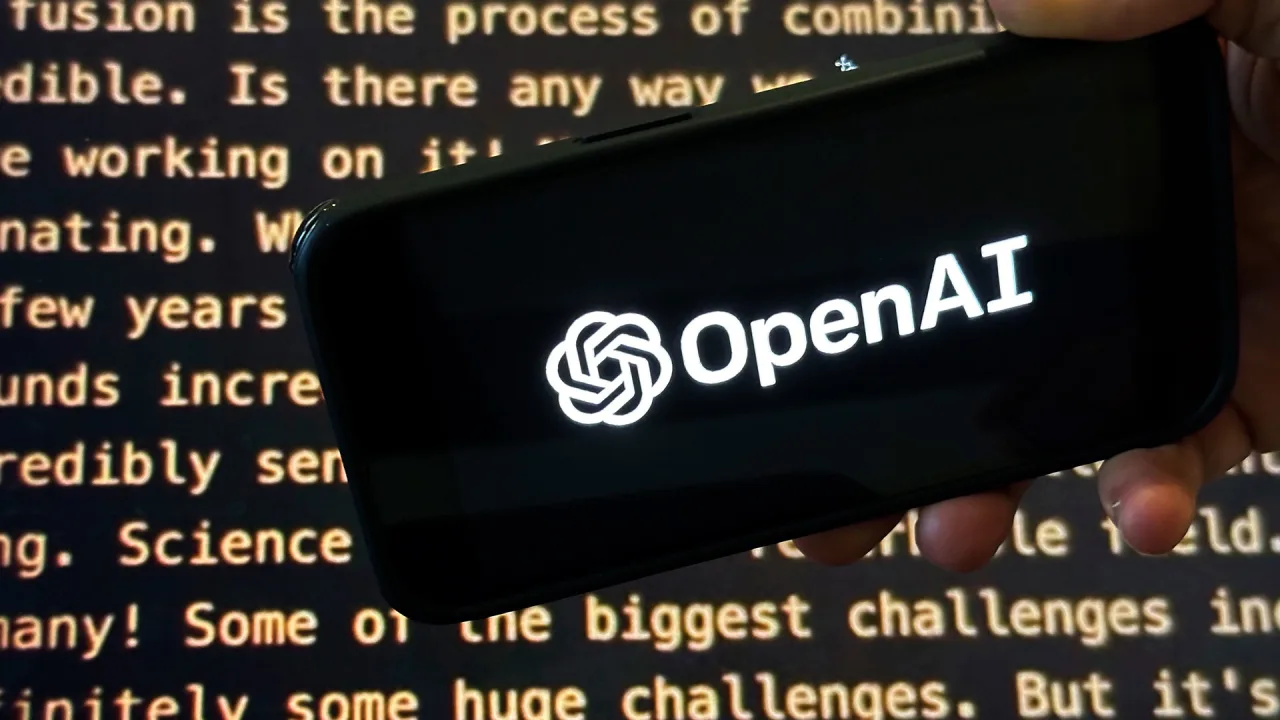
WWW.ENGADGET.COM
Engadget's favorite videos from 20 years of YouTube
For those of us who've been on the internet for decades, today is a big milestone: the 20th anniversary of the first video uploaded to YouTube. That happened way back on April 23, 2005, only about a year and a half before Google made the shrewd move of purchasing the site. That first video is the all-time classic 19-second clip "Me at the zoo," the kind of video that came to define early YouTube. It's grainy, short and has no production values to speak of. Fast forward a few decades and YouTube has no peer in terms of its sheer volume of audiovisual content —the company says that a mind-boggling 20 billion videos) have been uploaded in the last 20 years, and 20 million are updated daily.
With all that in mind, Engadget's staff put their heads together to pick out the videos that have meant the most to them over the years. Not surprisingly, there's some weird stuff here, a lot of it from the early days of the platform. Apparently the stuff that really resonates with us isn't polish or production, but the raw, oddball stuff that couldn't have existed anywhere else.
Ambient Renders
I test a whole bunch of portable batteries for Engadget. A power bank can refill a dead smartphone in one to two hours, but thanks to annoying technology “advancements” it takes around 20 hours to drain a phone again. I’m constantly playing YouTube videos on my tester handsets with the screen brightness cranked all the way up to make them die faster (these poor phones). My favorite videos to use are from Ambient Renders. Each one is eight or so hours of painstakingly rendered, mostly nighttime views from the windows of fancy lofts in modern-day big cities, cozy bedrooms of the distant past and sci-fi futurescapes. The soundtracks are soft rain, lonesome wind, crackling fires, distant thunder and the rumble of passing transport pods.
I often return to a Warm Cozy Cabin With a Relaxing Fire and Gentle Wind — a candle-lit bedroom with huge windows overlooking snow-covered pines, with a couple of mugs steaming in the corner. The subtle movements and details really come to life when you play them on a TV. There are a ton of these types of videos on YouTube and, lately, the creator has taken to adding “not made with AI” disclaimers to the video descriptions. It’s plain to see these are made with love and skill. The intricacy is stunning and even the sci-fi views are anchored in realism. — Amy Skorheim, senior reporter
Canadian, Please | gunnarolla & Julia Bentley
I was trying to remember the first YouTube video I was obsessed with and honestly couldn't tell you. Between communitychannel, Jake and Amir, Michelle Phan, Wong Fu Productions and many more, I have too many likes and faves to count. But I can tell you that I've been jamming to Gunnorolla's "Canadian, Please" since before it became cool to want to be Canadian. This certified bop was something I replayed over and over; I've memorized the lyrics and the song haunts me in my dreams, too. My more modern favorites change every month, but I currently adore CinemaSins, Scary Interesting, Wilko Rehashed, Psychology in Seattle and The School of Life. Oh and also, don't go looking for my channel from when I was a regular vlogger in the 2000s. Don't. — Cherlynn Low, managing editor
Carl Lewis National Anthem Fail
YouTube isn’t just for watching new videos of celebrities embarrassing themselves. You can also revisit humiliations from way before the video site’s inception!
Take this spectacular(ly bad) national anthem performance by Olympic sprinter Carl Lewis. Ahead of a 1993 regular-season NBA matchup between the Chicago Bulls and New Jersey Nets, the gold medalist stepped on the court to demonstrate the vocal talent we were deprived of as he wasted his prime years racing.
This video only includes snippets of Lewis’ belting (as in whipping listeners with a belt) rendition. But you still get his overly embellished opening note, self-aware “Uh oh!” after making a sound you’d expect from an animal being stepped on and an (ultimately unfulfilled) promise to make up for it.
As a bonus, this version includes SportsCenter anchor Charlie Steiner’s inability to keep his composure after the clip rolls. That’s followed by his Dad Joke-worthy commentary that Francis Scott Off-Key wrote Lewis’ rendition. — Will Shanklin, contributing reporter
Dog of Wisdom
It's almost 10 years later and I still reference this video every couple weeks. I can't offer higher praise than that. — Anna Washenko, contributing reporter
Food Wishes
One of the great things about YouTube, to this day, is the massive number of tutorial videos. I’ve used it to learn how to tie a tie, record music, put together furniture and where to dispose of that furniture when it’s given up the ghost. It also taught me how to cook. This is primarily thanks to one man. He goes by Chef John, but his channel is called Food Wishes.
I’m fairly sure he’s the very first cook to capitalize on the platform, as he’s been making recipe videos pretty much since the beginning. This spaghetti with clam sauce tutorial is over 18 years old. I chose this particular video because I remember a trio of occasions in my life where I whipped out this recipe to amaze friends, family and (gasp) would-be romantic partners. His simple, charming and no-nonsense approach to cooking has always clicked with me, and I’m not alone. He has over four million followers on the platform and still cranks out videos to this day. His channel is a great reminder of how useful YouTube can actually be. — Lawrence Bonk, contributing reporter
John Frusciante - 09 - New Dawn Fades
My favorite YouTube video, the one I return to year after year, is a bootleg of the Red Hot Chili Pepper’s John Frusciante playing Joy Division’s “New Dawn Fades” at a solo show in Amsterdam at the start of the century. Say what you will about his main band, but John Frusciante is easily one of the greatest living guitarists, and this video — shot in 2001 and uploaded to YouTube less than a year after the platform went online in 2005 — is the perfect showcase of his many talents as a musician.
The footage is grainy, like so many videos from the era, but what counts is you can hear nearly every nuance of his performance. With his beloved Martin 00-15 acoustic guitar, Frusciante plays two melodies at the same time in his trademark syncopated style, all the while singing Ian Curtis’ lyrics with so much emotion.
As a teenager, Frusciante’s performance inspired me to no end. I spent countless summer hours trying to learn and emulate his playing style. In 2006, I even bought an issue of Guitar World magazine because it came with a DVD that included an interview with Frusciante and a lesson from the man himself on how to play "Under the Bridge". I probably should have known someone would upload that video to YouTube. It would have saved me a few bucks.
Looking back at my favorite video all these years later, it captures what’s best about YouTube. You can find nearly every performance in music recording history. Frusciante’s performance of "New Dawn Fades" could have easily disappeared with the passage of time. Instead, it will now exist as long as YouTube does, waiting to inspire someone else. — Igor Bonifacic, senior reporter
Lenny Kravitz - Fly Away (lyrics)
YouTube is home to an endless stream of poignant art, thought-provoking video essays and open windows to other people’s lives. More than that, though, it’s home to a lot of really dumb shit. Most of that shit is bad, as forgettable as it is lazy. But when someone puts in the work to make their dumb idea as dumb as possible, when they are enlightened by just how dumb their idea could be... that’s when the magic happens.
This Lenny Kravitz “remix” by all-around web artist Neil Cicierega — which turns the funk rock hit into an ode to dragonflies and having sex with candy bars, all while aping a “my first Windows XP slideshow” aesthetic — is a prime example of the “good dumb” I’m talking about. It is completely of the internet, something that could only result from one weirdo out there with a silly idea and some video editing software. It is so stupid, but also inspired, so it always works for me. — Jeff Dunn, senior reporter
Rancid Stool - Low Music video
Damn, who is that handsome young man having the worst day of his life in glorious 280p? Oh wait, that would be me.
Way back in the day, my buds and I made a music video for a Foo Fighters song for a contest. Needless to say, we didn't win, but we had an absolute blast all the same. Making something silly with your friends is really fun. Who could have imagined?
Some [mumbles] years later, the video is still one of my favorite things I've ever done. Yes, the editing stinks (my bad), it doesn't make a whole lot of sense narratively and the name of our would-be production company is very regrettable.
Still, I'm really proud of what we put together. Every time I watch it, I get the urge to start making fun videos again. Maybe I’ll actually do that someday.
P.S. Screw you and your magnificent mustache forever, Chad Sexington. —Kris Holt, contributing reporter
Shining Movie Trailer Parody
In the age of AI, fake movie trailers have become something of a spam epidemic on YouTube. But as someone who distinctly remembers swapping video files to friends and coworkers via email with Quicktime or AVI files attached — yes, it was exactly the bandwidth and security nightmare it sounds like — I still rank this hand-edited Shining remix near the top of my YouTube Mount Rushmore. The romcom take on Kubrick's horror classic dates back to at least 2005, but it seems to get rediscovered by new fans every few years, and rightly so — it's a gem. — John Falcone, executive editor
Star Trek: Tik Tok
Lots of people have made music videos out of unexpected crossovers like this, but Star Trek: Tik Tok still stands out to me as the best. Every clip from the original 1960s series is paired to perfection with the lyrics, and Captain Kirk is a weirdly fitting analogue for Kesha's late 2000s party girl.
When I watch it now, I think this video captures the scrappy ethos of what it meant to go viral during the early days of YouTube. It was about creativity, not content creators. People were making weird and funny shit just for the heck of it. Every now and then you'd stumble on a video that resonated and it lived in your head rent-free for years. And what can I say, I still think this track is a banger. — A.W.
We Like The Moon
The first YouTube video I saw that left me totally agog at what the human mind is capable of was "We Like the Moon." I didn’t have a TV at the time so had no idea Quiznos had used the concept in their commercials. When I saw it on my friend's computer in 2006 or so, I was coming at it fresh. I remember a giddiness rising in my soul and a goofy smile plastering my face. It felt like we were living in a world of limitless creativity and possibility where fun was a guiding principle and “good” didn’t mean access to funding, expensive equipment, technical prowess, or even a decent voice. My partner and I sang it, and still sing it, whenever the moon, marmots, chopsticks or zeppelins are mentioned. Now, I realize strangely proportioned, animal-like monstrosities raving off-key about nonsense is old hat at this point. But I will never forget when this was first played for me. — A.S.
Where the Hell is Matt? 2008
This is the third of Matt Harding's videos of himself dancing badly in various scenic locations around the world, and the first in which he encouraged bystanders to dance with him — equally badly, with some exceptions. I have no defenses against large groups of people doing the same thing simultaneously in multiple locations.
Oddly specific, I know, but in a society obsessed with dividing and categorizing, it reminds me of our common humanity. This video never fails to bring a tear to my eye, from the subtle political statements (Tel Aviv and East Jerusalem were not placed right next to each other by accident) to the sheer obvious joy of everybody involved. I even like the music. — Sam Rutherford, senior reporter
Correction, April 23, 2025, 3:39PM ET: This story originally said that 20 trillion videos have been uploaded to YouTube; the correct figure is 20 billon. We apologize for the error.This article originally appeared on Engadget at https://www.engadget.com/entertainment/youtube/engadgets-favorite-videos-from-20-years-of-youtube-162004518.html?src=rss
0 Commentarios
0 Acciones
34 Views












